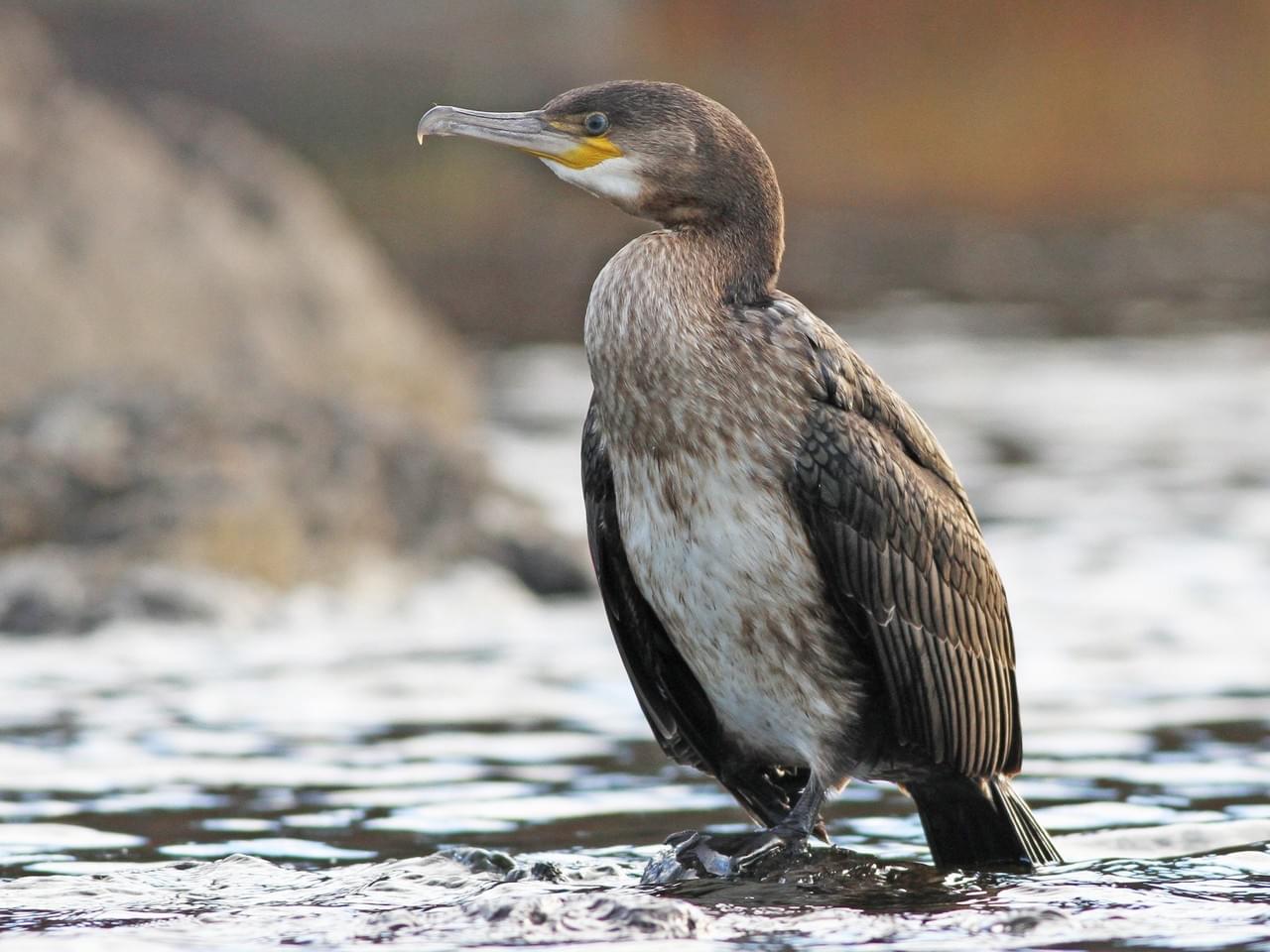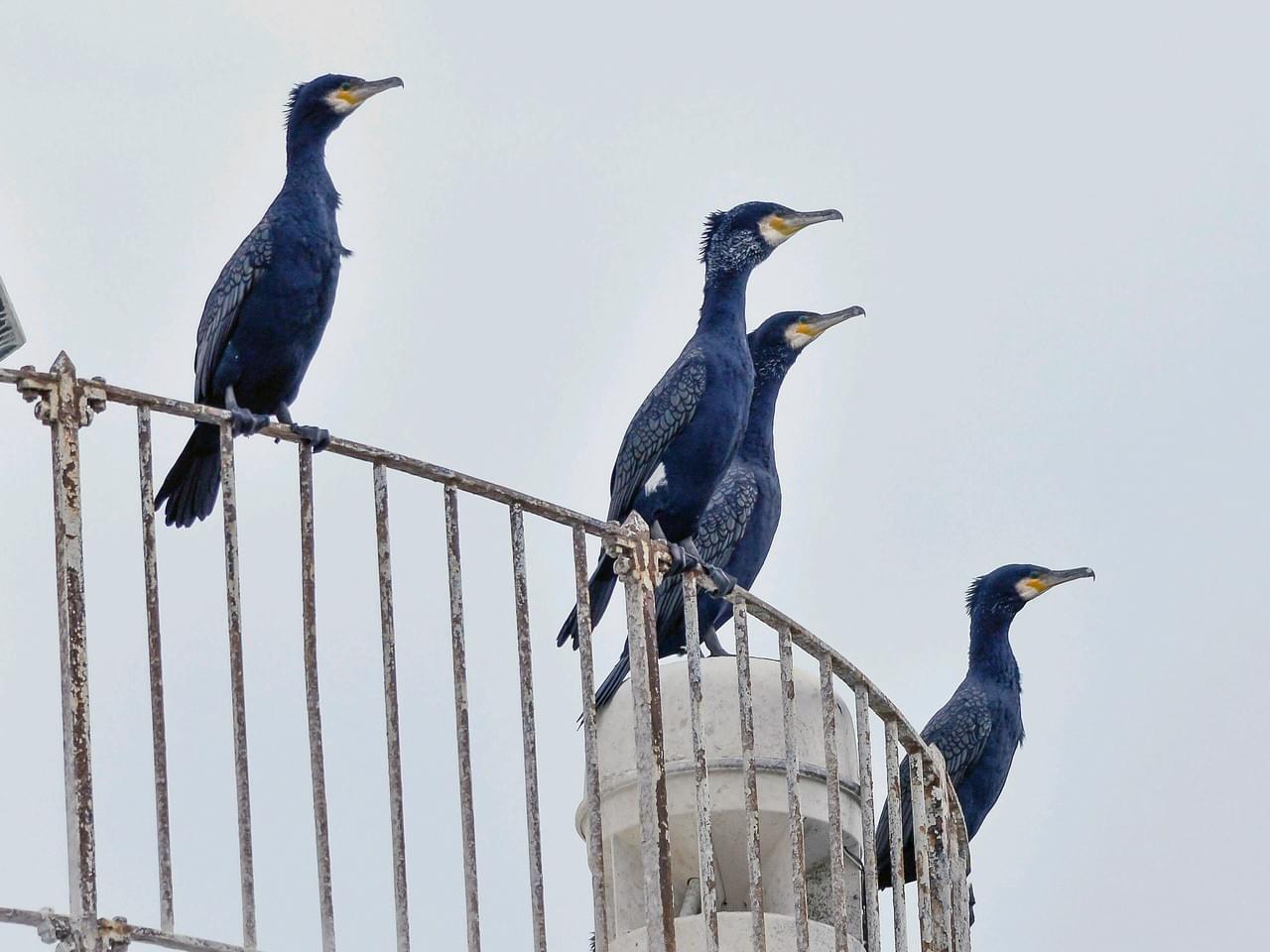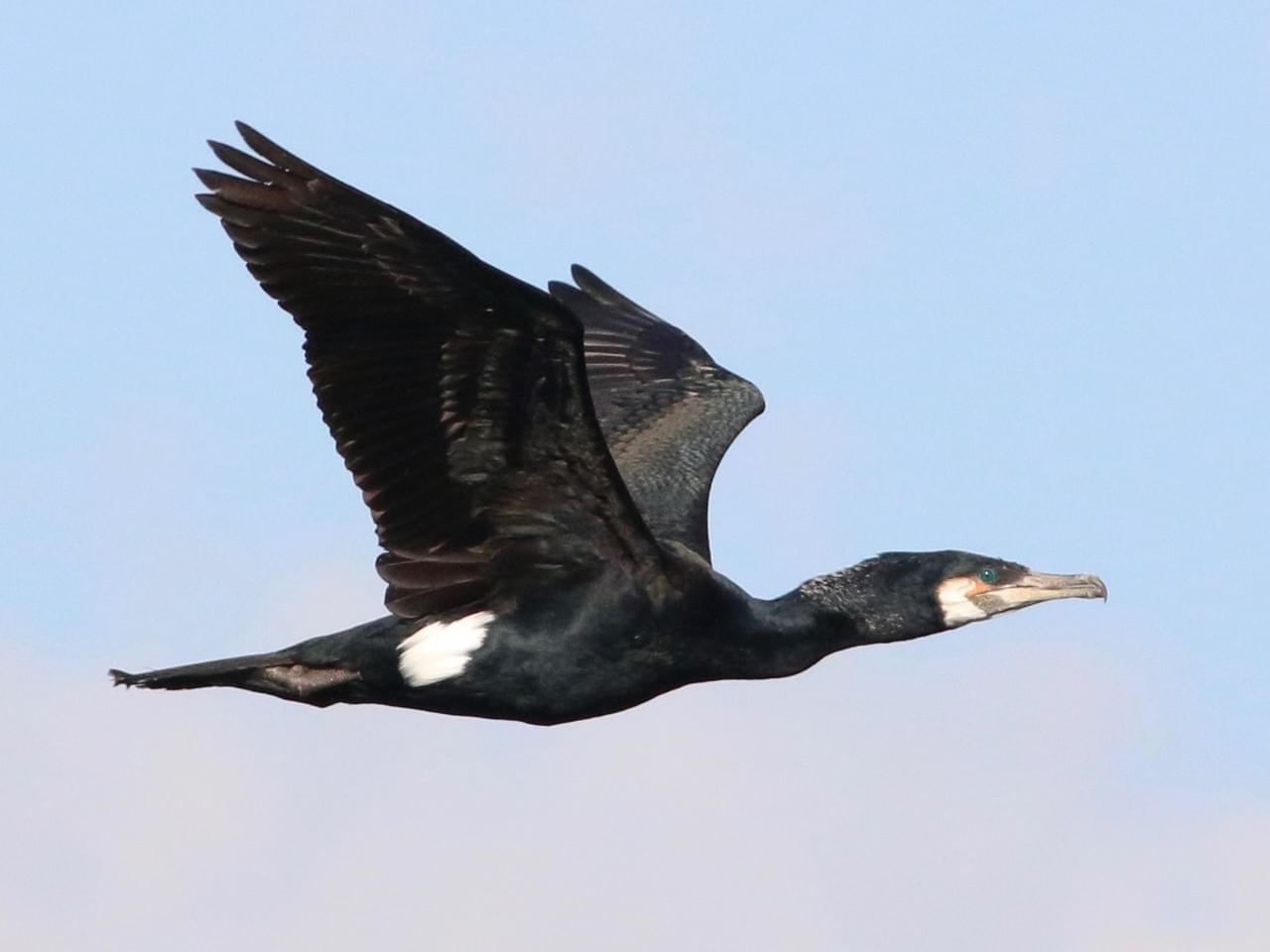 Appearance: black feathers, black webbed feet, pale beak, blue eyes, white patch on chin, breeding adults also have white patch on flanks under wings, neck kinked in flight
Appearance: black feathers, black webbed feet, pale beak, blue eyes, white patch on chin, breeding adults also have white patch on flanks under wings, neck kinked in flight
- Males and females look identical, except males are slightly larger and have slightly longer wingspan
- Height: 33-35 inches (about 3 feet)
- Wingspan: 51-63 (about 4.5-5 feet)
- Status: stable, populations have recovered from overhunting during 1800s
- Cormorants may also be shot if they are believed to threaten local fish populations, but they are protected under the migratory birds act (can’t shoot migrating flocks of cormorants)
- In recent years, great cormorants appear to be expanding their range southward, some populations overwinter as far down as Chesapeake Bay
- Habitat
- Found in many freshwater and saltwater habitats
- Most widely distributed cormorant, found in all continents except South America and Antarctica, it is also the largest cormorant species
- There is great variation in size between great cormorants in different regions: weight varies from 3-12 pounds
- Widespread in Europe, Asia, and Australia, but only found in coastal New England, Canada, and Greenland in North America
- Largest species of cormorant in world
 Diet
Diet
- Diving birds – eat a wide variety of fish
- Sit low down in water, then when prey is spotted, dive head first and swim after prey
- Normally swallow fish while under water, but sometimes bring large prey out of water, smash them against surface to stun them, then swallow them whole
- Cormorants have huge appetites, and large populations may have to be controlled so they do not deplete fish populations
- Culling (shooting) or egg oiling (stops eggs from developing) for population control
- Can dive 150 feet in coastal habitats, have been known to reach ocean floor
- In China, fishermen tie ropes to cormorants and allow them to hunt, instead of reeling fish in they feel the cormorant in with the fish in its mouth
- Migration
- Breed in freshwater habitats such as rivers, lakes, and marshland in Maine, Canada, and Greenland
- Winter along coastal waters from Maine to Virginia (may be found farther south, but this is uncommon)
- Overwinters in Long Island, forages along coast – large water bodies don’t freeze
- Migrates in flocks, fly in lopsided formations
- Average flight speed is about 20 mph, but top speed is about 60 mph
 Nesting
Nesting
- Nests in colonies, sometimes alongside other cormorants and gulls
- Largest colonies reach up to 20,000 birds
- Social bird – commonly feeds and nests with double-crested cormorants
- Large cormorant colonies often degrade their breeding environments – their guano is toxic to vegetation
- Male chooses nesting territory before attracting a female, one mate per year
- In Old World, great cormorants usually nest in trees, in North America they usually nest on the ground
- Male brings nest materials (sticks, seaweed, grass, debris, sometimes garbage) and female weaves nest
- Great cormorants usually return to the same nesting site each year
- Even if trees die and topple, cormorants return to site and build ground nests, although they prefer to nest in trees
- Average brood is 1-7 pale blue-green eggs with chalky white covering
- Both parents feed young
- Fledglings learn to fly after about 50 days
- Juveniles may be dependent on parents for another 40-50 days while they are learning to hunt
- Immature great cormorants have dull gray-brown plumage with white underside, which gradually molts to black
- It takes about 4-5 years before they mature and breed
- Average lifespan is 6-8 years, oldest great cormorant was 24 years old
- Nests in colonies, sometimes alongside other cormorants and gulls







